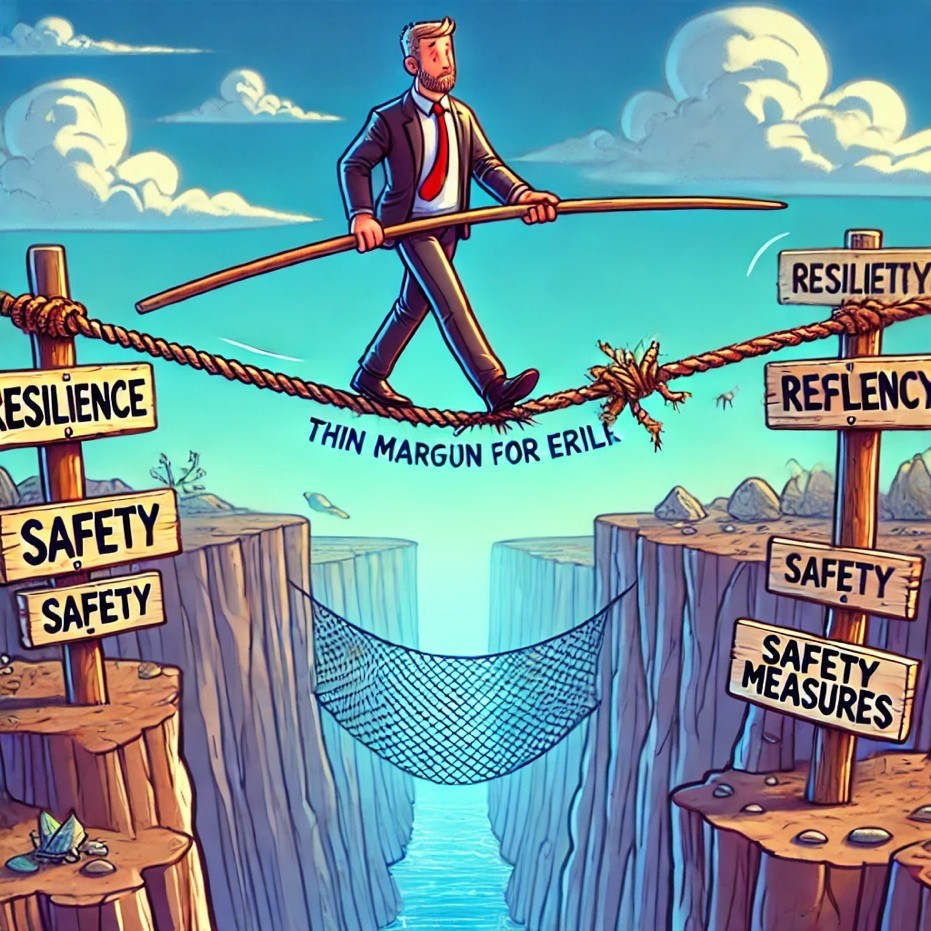In the fast-paced environment of software development, particularly for customer-facing applications used by millions daily, the margin for error can be thin. Near misses—those moments when a potential issue is detected and resolved before causing harm—offer unique opportunities to improve security, build resilience, and foster a culture of safety.
Borrowing from the aviation industry, where near-miss reporting has saved countless lives, software engineering teams can adopt a similar mindset. By formalizing a near-miss program, teams can systematically identify risks, learn from close calls, and turn these moments into actionable insights. This article outlines how to implement and benefit from such a program, transforming near misses from lucky escapes into catalysts for continuous improvement.

The Importance of Near Misses
In software engineering, a near miss is an event that could have caused harm but was prevented, often through quick detection or sheer luck. Examples include:
- Misconfigured API endpoints that could have exposed sensitive data but were caught during a code review.
- Oversights in cloud permissions flagged by automated security scans.
- Anomalies in application behavior detected by observability tools that indicated potential vulnerabilities.
These moments, while often unnoticed or quickly resolved, are critical. They reveal latent risks within systems, processes, or codebases that, if left unchecked, could snowball into major incidents. By treating near misses as learning opportunities, teams can not only fix issues but also strengthen their overall approach to security and resilience.
Building a Culture Around Near Misses
To leverage near misses effectively, teams must embrace a culture of transparency and collaboration. This begins with making engineers feel safe and empowered to report potential issues without fear of blame.
Encouraging Blameless Reporting
Blame-free reporting is essential for the success of any near-miss program. Engineers should see reporting a near miss as a contribution to team safety rather than an admission of failure. Celebrating vigilance—such as recognizing near misses during standups or retrospectives—reinforces this mindset.
For instance, one organization incentivized engineers to share near misses during weekly meetings. These stories of “what could have gone wrong” were as celebrated as feature launches, fostering a culture of vigilance and care for users.
Streamlining Reporting Processes
Integrating near-miss reporting into existing workflows ensures that it becomes a seamless part of an engineer’s day-to-day responsibilities. Reporting mechanisms should be easy to use and meet engineers where they are—whether in GitHub, Jira, or CI/CD pipelines. For example, a button in the CI pipeline could log a detected issue directly into a tracking system, along with metadata about the context.
Simple forms can collect essential details, such as:
- What the issue was.
- How it was discovered.
- Its potential impact.
Learning Together as a Team
One engineer’s near miss can serve as a valuable learning experience for others. Sharing these moments fosters collective learning and helps teams identify patterns in vulnerabilities.
Collaborative Analysis
After a near miss is reported, a cross-functional team—comprising engineers, security experts, and product managers—should investigate. This analysis should go beyond identifying what went wrong to uncovering systemic issues, such as gaps in automated tests or deficiencies in input validation.
For example, one team discovered that multiple near misses stemmed from overly permissive cloud infrastructure roles. By analyzing these incidents, they revamped their permissioning framework, reducing future risks across multiple services.
Storytelling for Knowledge Sharing

Engineers often learn best through storytelling. Regular retrospectives, newsletters, or internal security bulletins can highlight anonymized examples of near misses and their resolutions. For instance:
- “Last week, a database misconfiguration in staging almost exposed production data. Here’s how we caught it and what changes we made to prevent it.”
These shared stories build a culture of openness and continuous learning.
Turning Insights into Action
The true value of a near-miss program lies in transforming insights into tangible improvements.
Enhancing Tools and Processes
Near misses often reveal opportunities to strengthen tools and workflows. For instance, a team running chaos engineering experiments discovered a load balancer misconfiguration
that hindered scalability during simulated traffic spikes. This insight led them to update scaling policies and automate failover testing in CI/CD pipelines.
Improving Developer Experience
Unclear documentation or complex tooling often contributes to near misses. Addressing these pain points can significantly reduce risks. For example, one team rewrote documentation for security-critical APIs and added linting rules to IDEs, making it easier for developers to avoid common mistakes.
Embedding Near Misses into Engineering Culture
To ensure the long-term success of a near-miss program, it must become an integral part of the organization’s culture and processes.
Leadership Support
When engineering leaders prioritize safety alongside speed, it sends a clear message about the program’s importance. Leadership can reinforce this by sharing success stories that highlight how near-miss reporting improves customer trust and product reliability.
Customer-First Mindset
Every near miss represents a chance to protect users. Framing fixes in terms of their customer impact—such as “this change prevents accidental data exposure”—makes the work feel meaningful and motivates teams to prioritize safety.
Measuring Success

The success of a near-miss program often manifests in what doesn’t happen—fewer incidents, smoother deployments, and happier customers. However, teams can track specific metrics to measure progress, including:
- The number of near misses reported.
- Time to resolution for identified issues.
- Reduction in similar incidents over time.
These metrics demonstrate the program’s impact and provide a roadmap for continuous improvement.
In the high-stakes world of customer-facing products, near misses are inevitable. But by treating them as opportunities to learn, adapt, and improve, software engineering teams can turn these close calls into the cornerstones of security and resilience.
A near-miss program isn’t just about fixing bugs—it’s about creating a culture where every engineer feels invested in protecting users. It’s about identifying small cracks before they become major failures. Most importantly, it’s about building trust with customers who rely on your product to keep them safe. By embracing this responsibility, organizations can set a higher standard for cybersecurity and operational excellence.
Incorporating this approach not only safeguards the business but also instills confidence in customers, ensuring they trust your products to be reliable and secure. It’s not just about avoiding harm—it’s about building better, safer software for the future.

Author: Aaron Rinehart
Aaron has spent his career solving complex challenging engineering problems
and transforming cyber security practices across a diverse set of industries: healthcare, insurance, government, aerospace, technology, higher education, and the military. He has been expanding the possibilities of chaos engineering in its application to other safety-critical portions of the IT domain, most notably in cybersecurity
